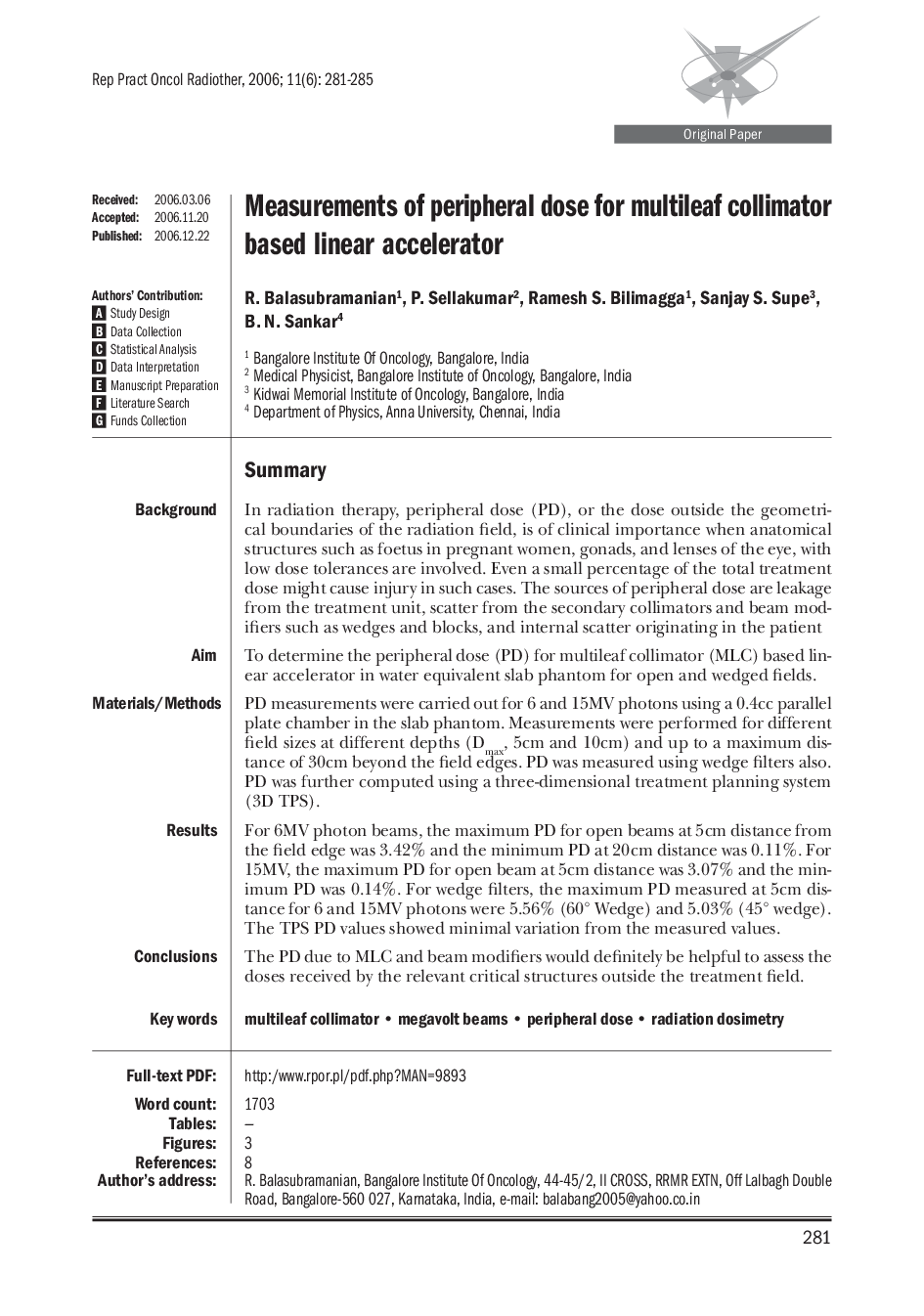| کد مقاله | کد نشریه | سال انتشار | مقاله انگلیسی | نسخه تمام متن |
|---|---|---|---|---|
| 1857246 | 1529461 | 2006 | 5 صفحه PDF | دانلود رایگان |

SummaryBackgroundIn radiation therapy, peripheral dose (PD), or the dose outside the geometrical boundaries of the radiation field, is of clinical importance when anatomical structures such as foetus in pregnant women, gonads, and lenses of the eye, with low dose tolerances are involved. Even a small percentage of the total treatment dose might cause injury in such cases. The sources of peripheral dose are leakage from the treatment unit, scatter from the secondary collimators and beam modifiers such as wedges and blocks, and internal scatter originating in the patient.AimTo determine the peripheral dose (PD) for multileaf collimator (MLC) based linear accelerator in water equivalent slab phantom for open and wedged fields.Materials/MethodsPD measurements were carried out for 6 and 15 MV photons using a 0.4cc parallel plate chamber in the slab phantom. Measurements were performed for different field sizes at different depths (Dmax, 5 cm and 10 cm) and up to a maximum distance of 30 cm beyond the field edges. PD was measured using wedge filters also. PD was further computed using a three-dimensional treatment planning system (3D TPS).ResultsFor 6 MV photon beams, the maximum PD for open beams at 5 cm distance from the field edge was 3.42% and the minimum PD at 20 cm distance was 0.11%. For 15 MV, the maximum PD for open beam at 5 cm distance was 3.07% and the minimum PD was 0.14%. For wedge filters, the maximum PD measured at 5 cm distance for 6 and 15 MV photons were 5.56% (60° Wedge) and 5.03% (45° wedge). The TPS PD values showed minimal variation from the measured values.ConclusionsThe PD due to MLC and beam modifiers would definitely be helpful to assess the doses received by the relevant critical structures outside the treatment field.
Journal: Reports of Practical Oncology & Radiotherapy - Volume 11, Issue 6, 2006, Pages 281-285